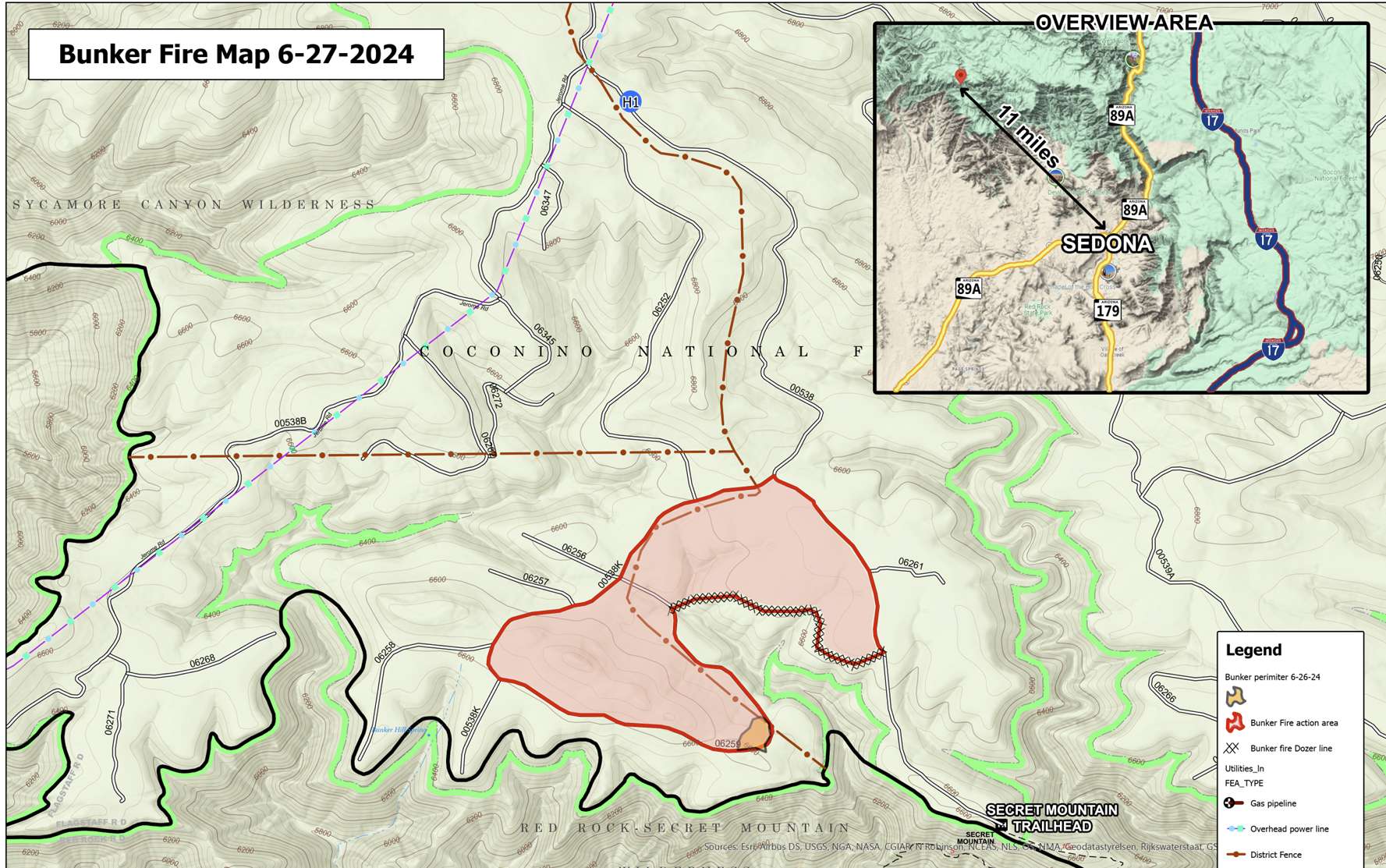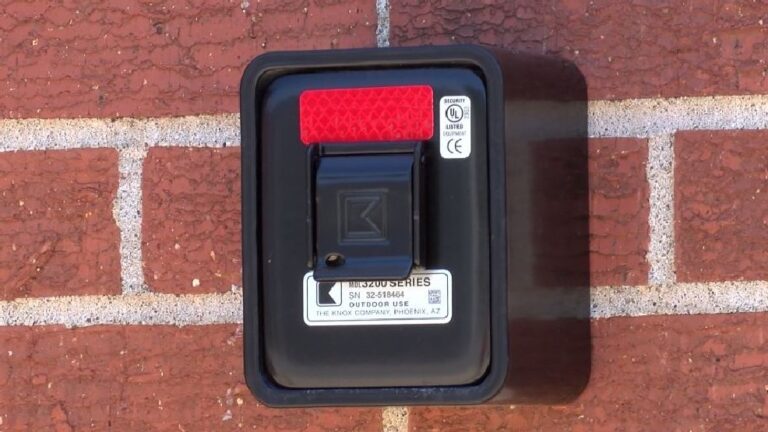This weekend, fire crews from the Coconino National Forest will begin controlled burns on the lightning-caused Bunker Fire located near Bunker, approximately 11 miles northwest of Sedona.
Short Summary:
- The Bunker Fire started on Monday due to lightning.
- Controlled burns aim to contain the seven-acre fire.
- Smoke will be noticeable from Sedona, with no closures.
The Coconino National Forest has announced its plan to conduct controlled burns this weekend to manage the lightning-caused Bunker Fire. The fire was first reported on Monday and has since grown to seven acres within the Red Rock-Secret Mountain Wilderness area, situated about 11 miles northwest of Sedona.
The fire management strategy involves a technique known as firing operations. In speaking about these operations, the Coconino National Forest spokesperson explained,
“Firing operations are prescribed burns that aim to eliminate fuel, such as dry vegetation, between a control line and the main body of the fire. By doing this, we ensure the wildfire has nothing to feed on and subsequently prevent its growth.”
With a footprint of 200 acres, the fire crews plan to utilize surrounding roads as natural boundaries to keep the Bunker Fire contained. The spokesperson emphasized that the fire containment is expected to be completed within a single day. “Our crews have extensive experience using area roads as natural holding features to mitigate fire spread. This ensures the fire remains within pre-determined boundaries,” shared the forest service representative.
Residents and visitors to the Sedona area are likely to notice significant smoke during these operations. The smoke will be visible from several popular locations, including trailheads and heritage sites near where the fire burns. As per the latest updates, there are no road or area closures related to the Bunker Fire.
The firing operations conducted by the fire crews from the Coconino National Forest are crucial for controlled burns. These operations are directed and carried out by highly trained personnel equipped to handle wildfires using strategic planning. This not only ensures safety but also helps in protecting the overall health of the forest by removing dry, combustible vegetation that could otherwise ignite during unpredictable weather conditions.
For those residing in or traveling to the region, the presence of smoke should be anticipated. A firefighter involved in the operation remarked,
“Safety is our top priority. We not only focus on containing and managing the fire but also on minimizing any potential risks to residents and visitors.”
The presence of the fire crews, along with the utilization of controlled burns, showcases the proactive measures put in place to handle such natural incidents. It also reflects the broader strategy employed by the Coconino National Forest to maintain ecological balance while ensuring public safety.
This lightning-caused fire serves as a stark reminder of the susceptibility of wilderness areas to natural occurrences. Fire management authorities continuously emphasize the importance of prescribed fire practices, especially during times when the threat of wildfires is at its peak.
In a related context, the spokesperson elaborated on the necessity of these measures, stating,
“Our ecosystem is very susceptible to fires, and the implementation of controlled burns is a vital technique that serves to preserve both the environment and public safety. It’s a balancing act that we are well-trained to manage.”
The strategic execution of this controlled burn, similar to other measures, flows from the broader fire management strategies employed not just in the Coconino National Forest, but across various national forests in the U.S. As of now, the Bunker Fire’s containment timeline appears to be progressing smoothly with full containment expected within the stipulated 24-hour timeframe.
Noteworthy National Forest Regions:
- Beaverhead Deerlodge National Forest
- Bitterroot National Forest
- Custer Gallatin National Forest
- Dakota Prairie Grassland
- Flathead National Forest
- Helena-Lewis and Clark National Forest
- Idaho Panhandle National Forest
- Kootenai National Forest
- Lolo National Forest
- Nez Perce National Historic Trail
- Nez Perce-Clearwater National Forests
- Regional Office R1
Coconino National Forest is one among many forests where such prescribed burns are a routine part of fire management strategies. National forests across the country employ similar measures to mitigate wildfires, balancing conservation efforts with public safety.
As the community remains well-informed about the ongoing efforts to contain the Bunker Fire, it’s vital they stay updated on any potential changes or instructions from fire management authorities.
The spokesperson played a crucial role in disseminating information, ensuring that residents and visitors are well-versed with the current situation and necessary precautions.
“While there are currently no road or area closures, we urge the public to be mindful of their surroundings, particularly in areas where smoke is dense,”
added the representative.
With fire crews working diligently and employing effective fire management techniques, the community can feel reassured about the efforts being made to keep everyone safe. The situation with the Bunker Fire also highlights the importance of having robust fire management protocols in place.
The involvement of dedicated fire management teams from Coconino National Forest and their use of controlled burns epitomizes an organized response to a naturally occurring phenomenon. Their actions serve as a testament to the ongoing commitment towards preserving both the natural environment and ensuring public safety during fire incidences.







